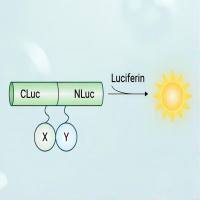Imaging of Endothelial Progenitor Cell Subpopulations in Angiogenesis Using Quantum Dot Nanocrystals
互联网
433
Over the last decade, research has identified a class of bone marrow-derived circulating stem cells, termed endothelial progenitor cells (EPCs), that are capable of homing to vascular lesions in the eye and contributing to pathological ocular neovascularization (NV). In preclinical and biological studies, EPCs are �frequently identified and tracked using a intracellularly loaded fluorescent tracer, 1,1′-dioctadecyl-3,3,3′,3′-tetramethylindocarbo cyanine perchlorate-labeled acetylated LDL (DiI-acLDL). However, this method is limited by photobleaching and insufficient quantum efficiency for long-term imaging applications. We have developed a method for conjugation of high quantum efficiency, photostable, and multispectral quantum dot nanocrystals (QD) to acLDL for long-term tracking of EPCs with improved signal-to-noise ratios. Specifically, we conjugated QD to acLDL (QD-acLDL) and used this conjugated fluorophore to label a specific CD34+ subpopulation of EPCs isolated from rat bone marrow. We then utilized this method to track CD34+ EPCs in a rat model of laser-induced choroidal neovascularization (LCNV) to evaluate its potential for tracking EPCs in ocular angiogenesis, a critical pathologic feature of several blinding conditions.








